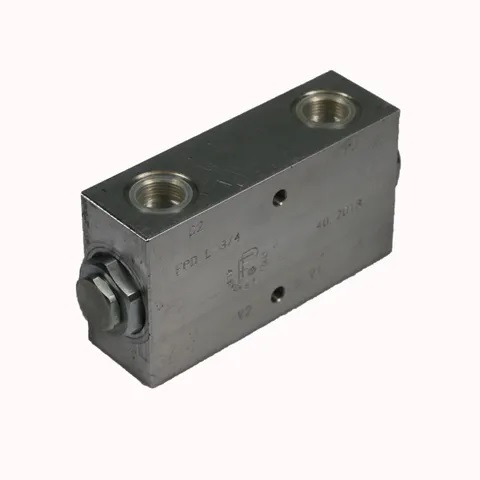Shop Now
-
Hydraulics
- Parts
- Fittings
- Motors
- Filters
- Hose Tails
-
Adaptors
- Tube Weld
- Caps
-
Straight
-
Nipple
- BSPP Male x BSPP Male
- BSPP Male x JIC Male
- BSPT Male x BSPT Male
- BSPT Male x JIC Male
- BSPT Male x UNO Male
- JIC Male x JIC Male
- NPT Male x NPT Male
- ORFS Male x Metric Stud Male
- ORFS Female x ORFS Male
- NPT Male x NPT Female
- BSPT Male x MS Male
- BSPP Male x UNO Male
- BSPT Male x BSPP Male
- BSPT Male x NPT Male
- NPT Male x JIC Male
- JIC Male x ORFS Female
- JIC Male x UNO Male
- JIC Male x ORFS Male
- JIC Male x Metric Stud Male
- UNO Male x ORFS Male
- ORFS Male x ORFS Male
- JIC Male x JIC Female
- BSPP Female x JIC Male
- BSPT Male x ORFS Male
- BSPT Male x ORFS Female
- Metric Stud Male x Metric L Ma
- ORFS Male x ORFS Fixed Female
- JIC Male x Code 62
- Metric L Male x Metric L Male
- Reducing Bush
- Socket
- Bulkhead
- BSPT Male Suction Tail
- UNO Male Suction Tail
-
Male x Female Swivel
- BSPP Male x BSPP Female
- BSPP Male x JIC Female
- BSPP Male x ORFS Male
- BSPT Male x BSPP Female
- JIC Female x ORFS Male
- BSPP Female x UNO Male
- JIC Female x UNO Male
- BSPT Male x JIC Female
- ORFS Fixed Female x ORFS Male
- JIC Male x JIC Female Restr
- BSPP Male x ORFS Female
- JIC Male x BSPP Female
- JIC Male x JIC Female
- BSPP Male x Metric H Female
- BSPT Female x BSPP Male
- BSPP Male x Metric L Male
- BSPP Male x Metric L Female
- BSPP Male x Metric H Male
- BSPT Female x BSPT Male
- OEM Female x BSPP Male
- Male x Female Solid
-
Nipple
- Plug
- Tee Piece
- Cross
- Flange Clamps
- Banjo Bolts
- Tube Fittings
- 45 Degree Elbow
-
90 Degree Elbow
-
Elbow Block
- BSPP Male x JIC Male
- BSPT Male x JIC Male
- BSPP Male x ORFS Male
- BSPT Male x BSPP Female
- Metric L Male x Metric L Femal
- NPT Male x NPT Female
- JIC Male x Metric Male
- BSPP Female x UNO Male
- JIC Male x UNO Male
- BSPT Female x BSPT Female
- BSPP Male x BSPP Female
- BSPP Male x BSPP Male
- BSPT Male x BSPT Female
- BSPT Male x BSPP Male
- BSPT Male x UNO Male
- BSPT Male x BSPT Male
- BSPT Male x Suction tail
- NPT Male x JIC Male
- JIC Male x JIC Female
- JIC Male x ORFS Female
- JIC Male x JIC Male
- UNO Male x ORFS Male
- UNO Male x Suction Tail
- ORFS Male x ORFS Male
- NPT Male x ORFS Female
- ORFS Female x ORFS Male
- Elbow Tube
- Bulkhead
-
Elbow Block
- Hose
- Valves
- Pumps
- Cylinders
- Power packs
- Breakaway Couplings
- Pipe Clamps
- Seals
- Ferrules
- Equipment
- Hydraulic Hose Kits
- Misc
Counterbalance Valve vs a Pilot-operated Check Valve – what’s the difference?
When managing the downward movement of a load, counterbalance valves work more smoothly than pilot-operated check valves and offer a leak-free seal. The pilot check valve is not as smooth as it may lose the pilot signal when it is opened, resulting in the valve closing abruptly. External pilot-operated check valves don't need constant adjustments whenever you change loads, while counterbalance valves do.
Pilot operated check valves allow an unrestricted flow from the inlet port through the outlet port. Supplying a pilot pressure to the pilot port facilitates flow in the reverse direction. When delivery from the pump catches up with the cylinder, pilot pressure builds, moving the pilot piston and the valve opens. This opening and closing of the pilot piston causes a jerky motion as the pilot signal is disrupted. They are ideal for reliably holding an actuator position in a variety of applications
Counterbalance valves create back pressure at the return line of the actuator to prevent losing control over the load. Counterbalance valves are also used to prevent a loaded cylinder from falling, but their operation is smoother than a pilot-operated check valve. Counterbalance valves are available with either poppet- or spool-type pressure control elements. In order to prevent a loaded cylinder from drifting, a poppet-type valve must be used. Spool-type counterbalance valves may be used as brake valves in hydraulic motor applications, as external brakes are used to prevent loaded motors from rotating. Counterbalance valves automatically regulate the descent of loads and holding equipment steady while lifted, which means they offer a level of safety to workers in the area.

